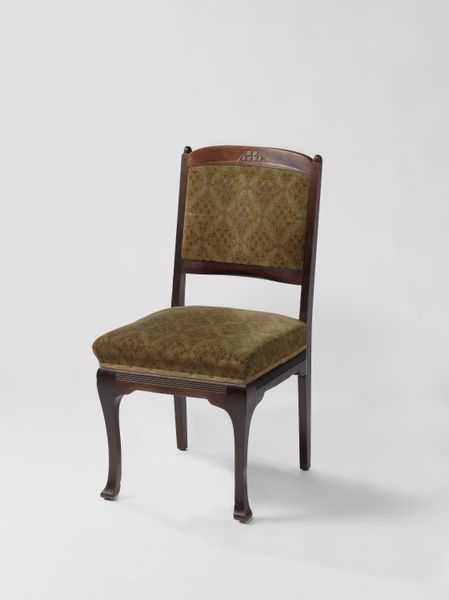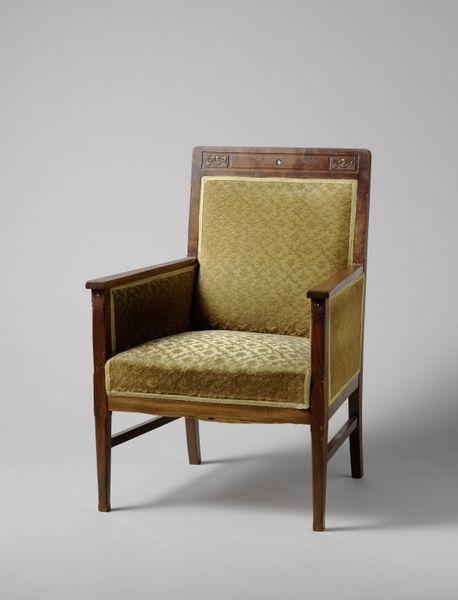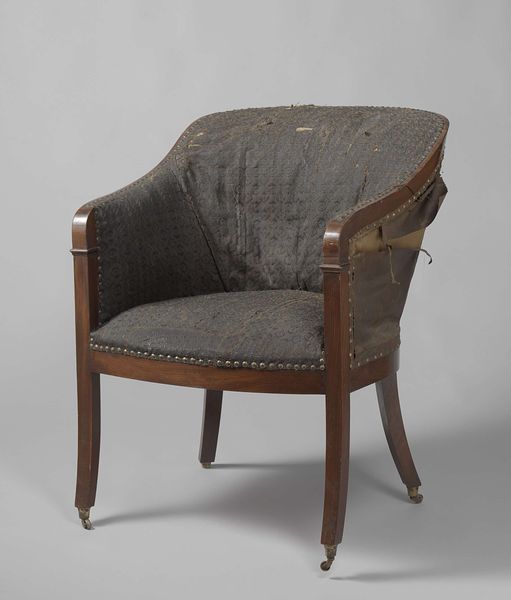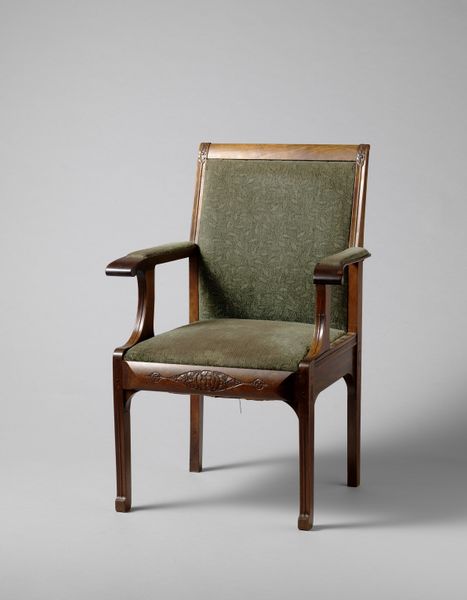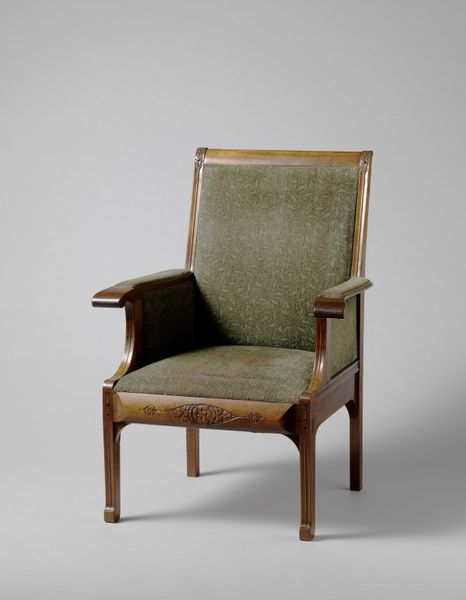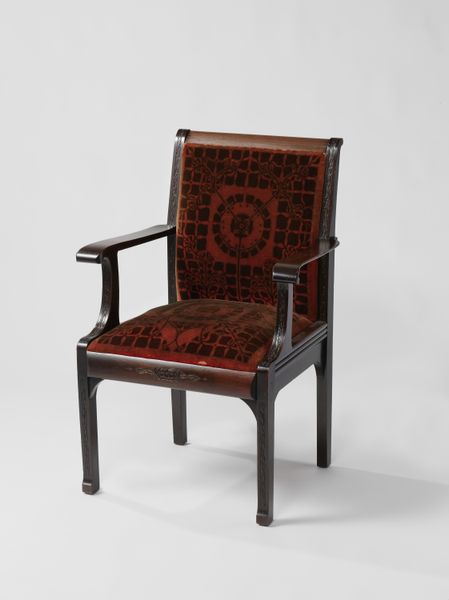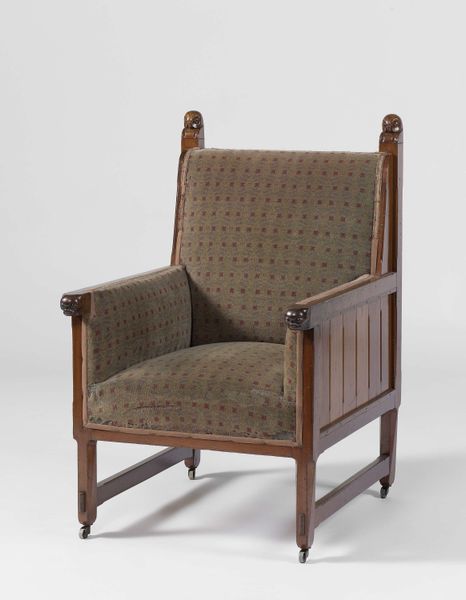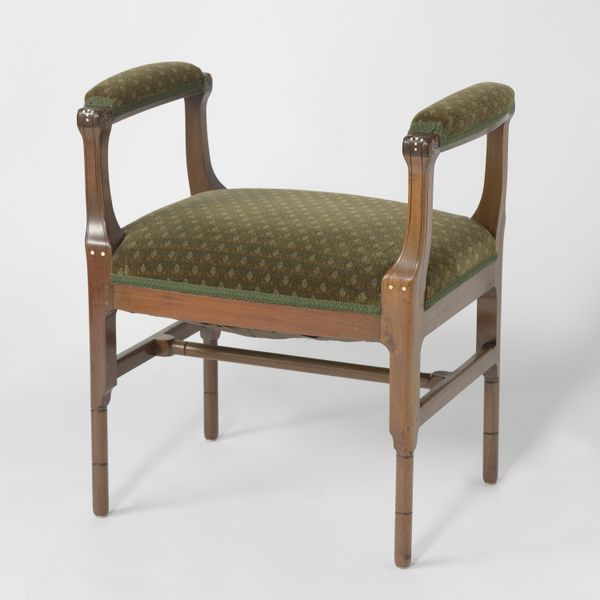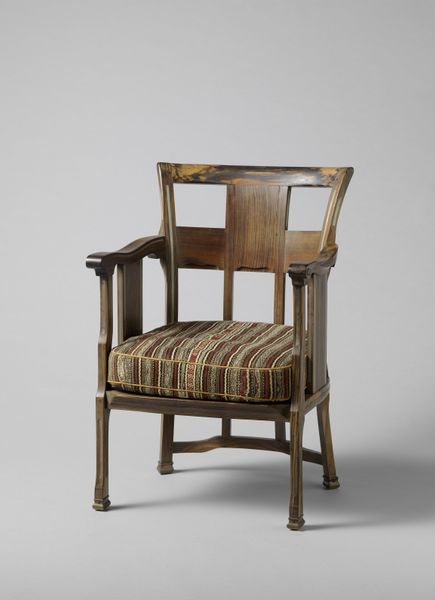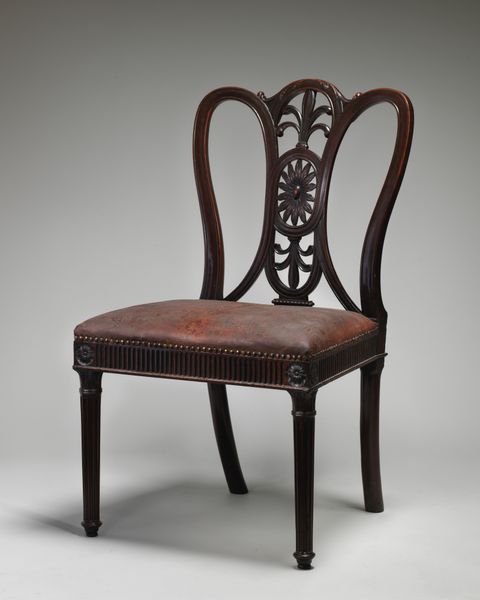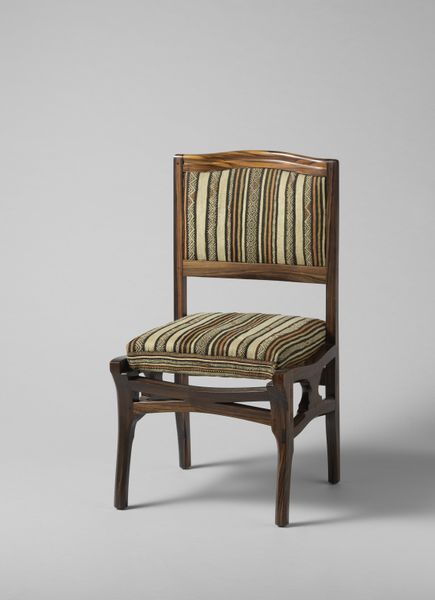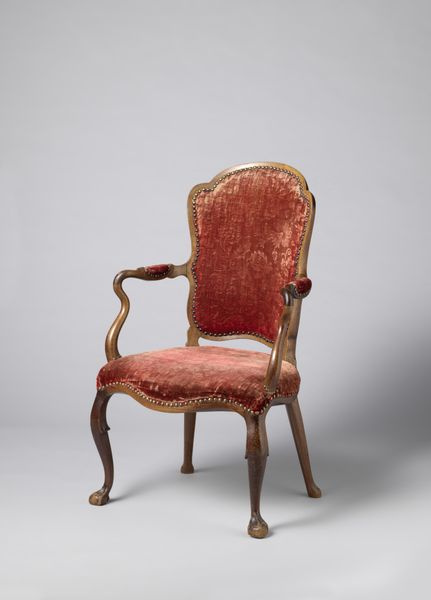
mixed-media, textile, wood
#
mixed-media
#
organic
#
arts-&-crafts-movement
#
furniture
#
textile
#
wood
Dimensions: height 92 cm, width 64 cm, depth 58 cm, weight 16.8 kg
Copyright: Rijks Museum: Open Domain
Curator: I'm drawn to this armchair, created around 1916 by Theo Nieuwenhuis. It's crafted from brown-stained mahogany with mixed media, including beautiful textiles. My first thought is—plush! It has a kind of austere elegance with such inviting curves. The dark wood against the muted greens really soothes the eye. Editor: That muted green immediately reads "restrained" to me, almost melancholy, yet there's a subtle luxury in the details. Given the period, the Arts and Crafts movement connection speaks volumes. Think of the social upheaval around the First World War—this isn’t just furniture, it's a statement. Curator: Absolutely, it whispers rather than shouts. And that whisper hints at a deliberate return to nature, a celebration of craftsmanship during an era of increasing industrialization. The organic motifs carved into the wood—are those stylized leaves?—really amplify that sense. It feels handmade and honest. Editor: Precisely. That honesty ties into the core tenets of the movement: a rebellion against mass-produced, often exploitative manufacturing. We must remember that design choices are seldom innocent, especially in this period; choosing to use sustainable material such as wood also embodies a specific stance, especially considering it would’ve served as domestic furnishing to the bourgeoisie. Curator: It's a paradox, isn't it? This gorgeous piece speaks to an ideal—simplicity, nature, integrity—yet it likely furnished a very privileged space. It does makes one wonder about the accessibility of such beauty, even then. And those velvety textures—almost begging to be touched. Editor: Exactly, who was invited to touch? Who could afford this invitation to rest and reflect? The beauty seduces, but it should also provoke questioning about labor, access, and power. The chair asks us who gets to be at ease and in style. Curator: A stylish revolutionary, perhaps. So even something seemingly passive, like an armchair, becomes this layered, complex narrative. Editor: I think at the heart of all good design is that underlying statement or argument. And for all its domesticity, it reflects the social arguments of its day. The Arts and Crafts Movement believed in ethical creation. It really pushed back at dehumanizing, factory production. Curator: Well said. Next time, I shall certainly consider how this elegant item could challenge me about more social concepts in the world, than simple utility.
Comments
No comments
Be the first to comment and join the conversation on the ultimate creative platform.
